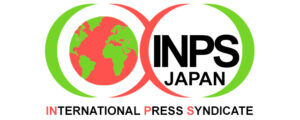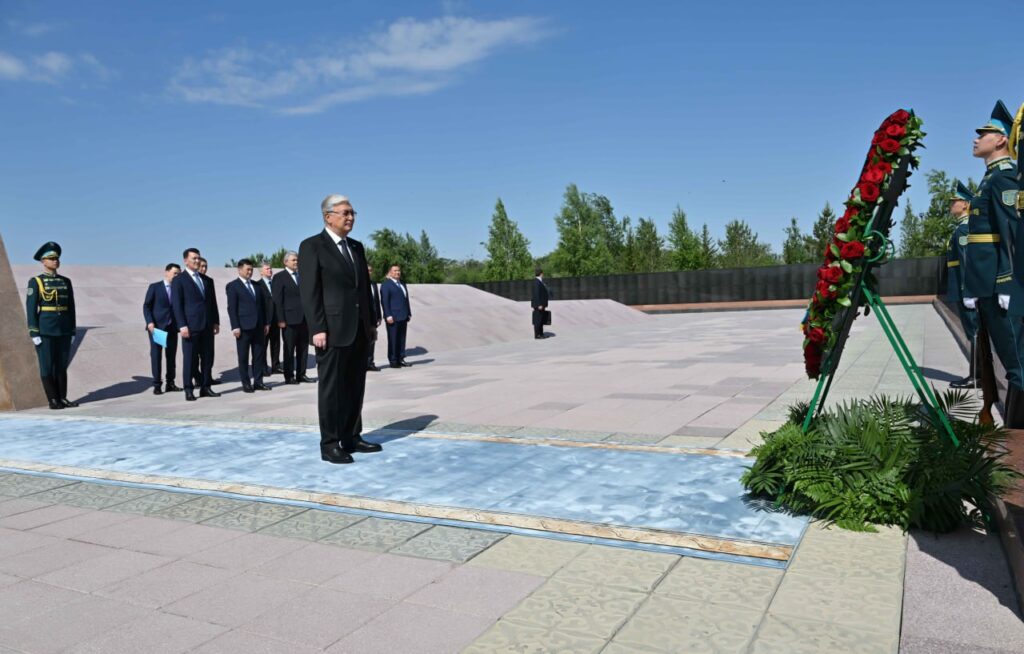By Katsuhiro Asagiri
Tokyo/ASTANA (INPS Japan) – On the windswept steppe west of Astana, President Kassym-Jomart Tokayev led a solemn ceremony this week to mark Kazakhstan’s Day of Remembrance for the Victims of Political Repressions and Famine—an annual reflection on one of the nation’s darkest chapters. (P-07)|INDONESIAN|JAPANESE|ARABIC|CHINESE|
The ceremony was held at the ALZHIR Memorial Complex, a former Stalin-era camp where nearly 8,000 women—wives of those declared “enemies of the state”—were once imprisoned.
“The lessons of history must never be forgotten,” Tokayev declared, referring to the Stalin-era policies that left deep scars on Kazakhstan’s cultural and intellectual life.
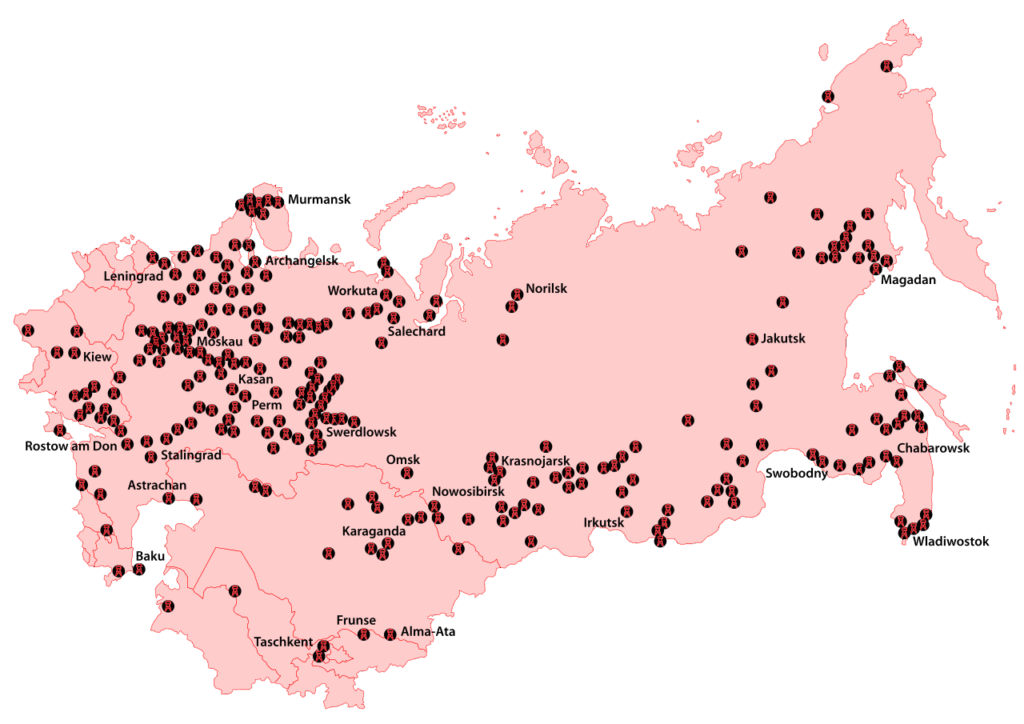
Kazakhstan’s experience forms part of the broader story of Stalinist repression, which extended well beyond Russia’s borders. After Japan’s surrender in 1945, an estimated 560,000 to 760,000 Japanese prisoners of war and civilians were forcibly relocated and detained across Soviet territory. Among them, about 50,000 were sent to camps in what was then the Kazakh Soviet Socialist Republic (now Kazakhstan). In camps such as Spassky near Karaganda, many perished under harsh forced labor and brutal conditions.
Kazakh citizens suffered even greater losses. In the early 1930s, famine caused by Stalin’s agricultural collectivization policies and the forced destruction of the traditional nomadic way of life claimed as many as 2.3 million Kazakhs. This was followed by purges in which countless intellectuals and landowners were executed or exiled.
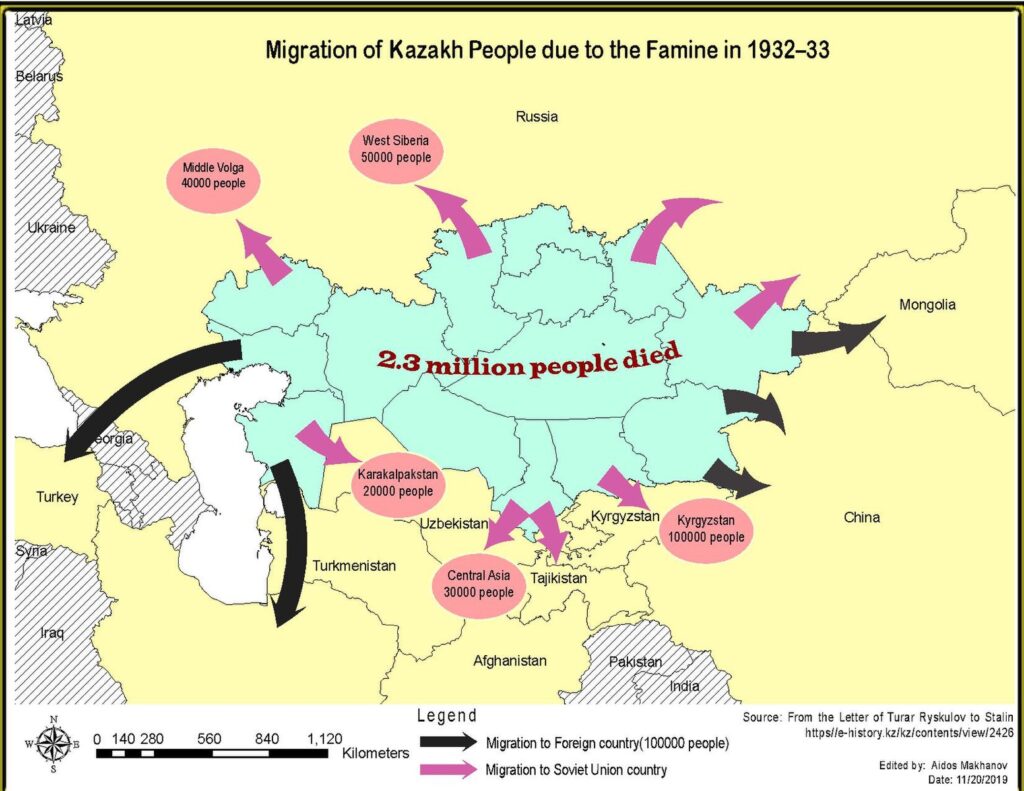
Since gaining independence in 1991, Kazakhstan has sought not only to confront this painful legacy but also to embrace the vision of a multiethnic and multifaith society rooted in tolerance. Its constitution guarantees equality for all ethnic and religious groups, and more than 300,000 victims have been officially rehabilitated. Declassified archives continue to shed new light on this era.
But Kazakhstan’s progress is not merely about reconciliation with the past. It has also chosen to make tolerance and dialogue central pillars of its national identity.
As I wrote in a 2023 INPS Japan article, Kazakhstan’s leadership has placed global interfaith dialogue at the heart of its foreign engagement. The Congress of Leaders of World and Traditional Religions, launched in 2003, has become a signature platform bringing together leaders from Islam, Christianity, Judaism, Buddhism, Hinduism, and other faiths for sustained dialogue.
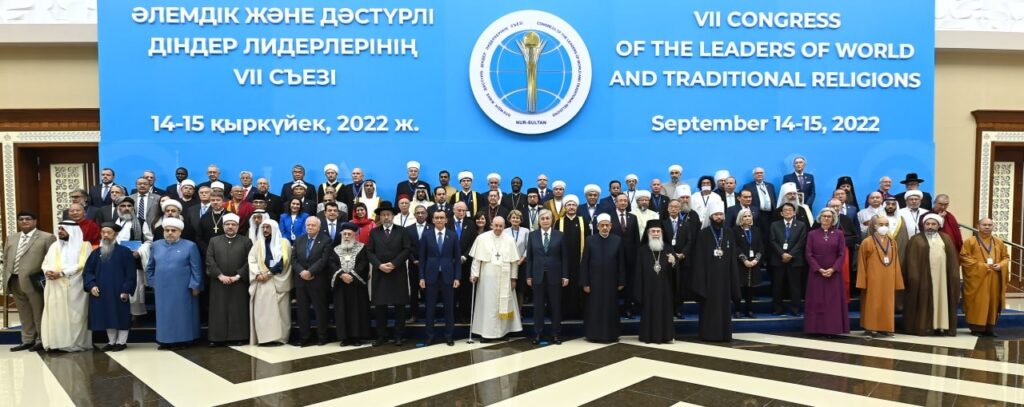
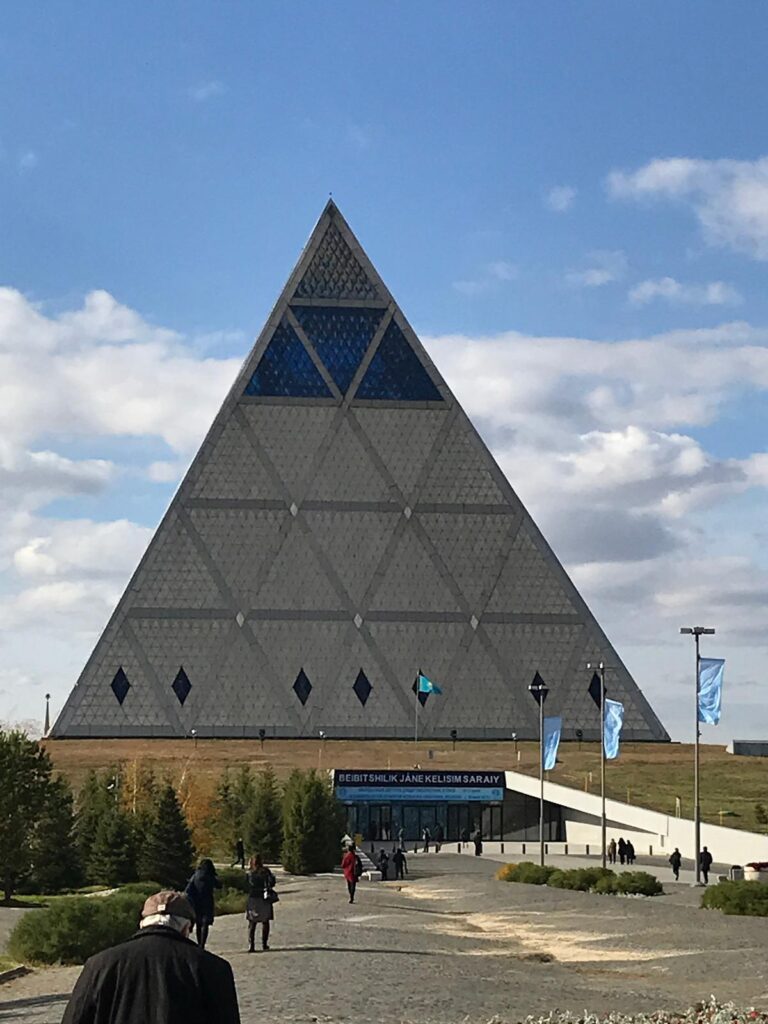
The upcoming 8th Congress, scheduled for September 17–18, 2025, in Astana, is expected to draw religious leaders, scholars, and policymakers from around the world.
Hosted at the iconic Palace of Peace and Reconciliation, the Congress reflects Kazakhstan’s role as a bridge between East and West and its commitment to promoting peaceful coexistence, mutual respect, and dialogue.
This approach holds particular relevance in a world increasingly fractured by sectarian conflict and geopolitical tensions. Kazakhstan’s efforts to transform a history marked by division and repression into a model of inclusion and cooperation offer valuable lessons for the global community.
Such values were echoed by Pope Francis, who attended the 7th Congress in 2022. In his closing address, the pontiff stated, “Religions must never incite war, hateful attitudes, hostility or extremism, but instead become a beacon of hope for peace.” He emphasized the importance of interreligious dialogue and coexistence.
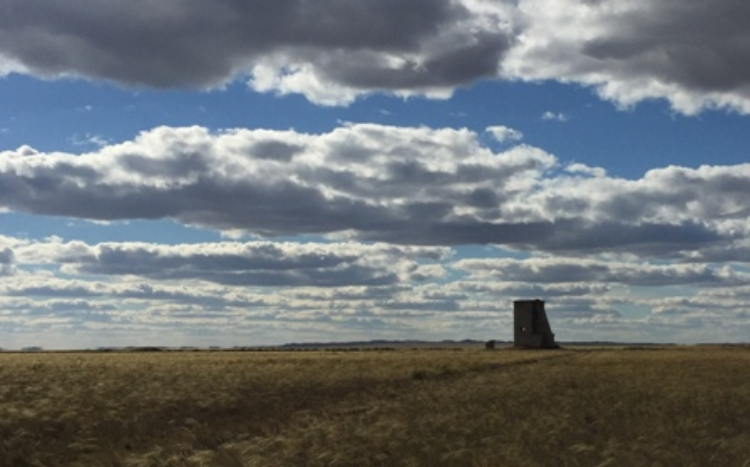
Kazakhstan is also confronting another grievous injustice from its Soviet past. From 1949 to 1989, 456 nuclear tests were conducted at the Semipalatinsk Test Site, exposing more than one million people to radiation—an enduring tragedy. In response, post-independence Kazakhstan chose to voluntarily renounce the world’s fourth-largest nuclear arsenal, making nuclear disarmament a cornerstone of its foreign policy.
This commitment to nuclear disarmament also extends to interfaith diplomacy. Since the 6th Congress of Leaders of World and Traditional Religions in 2018, Kazakhstan has worked closely with Soka Gakkai International (SGI) of Japan and the Nobel Peace Prize-winning International Campaign to Abolish Nuclear Weapons (ICAN), advancing a shared vision of peace, dialogue, and the abolition of nuclear weapons, grounded in the humanitarian consequences of nuclear weapons use and the testimonies of Hibakusha, while promoting the Treaty on the Prohibition of Nuclear Weapons (TPNW) and deepening international cooperation.
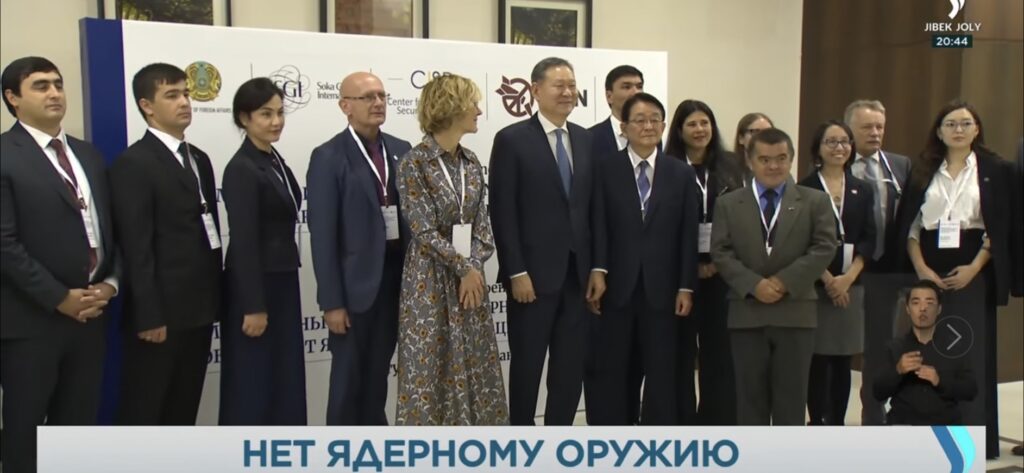
The ALZHIR Memorial itself continues to bear witness to the injustices of the past. Its preserved barracks and “Arch of Sorrow” leave a powerful impression on visitors.
Yet as this week’s remembrance ceremony and Kazakhstan’s ongoing interfaith efforts make clear, the country is determined to build a future grounded in tolerance, justice, and peace.
“Such injustices must never be repeated,” Tokayev affirmed—a principle that now informs both Kazakhstan’s domestic policies and its multi-vector diplomacy aimed at fostering dialogue and harmony on the international stage.
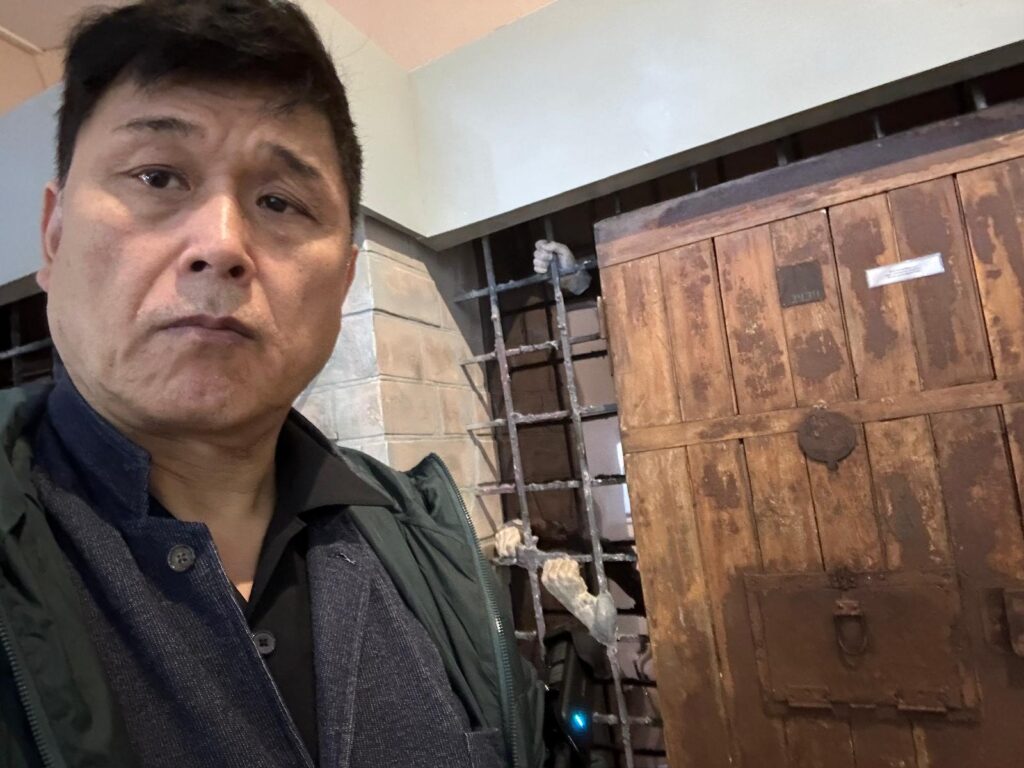
Katsuhiro Asagiri is the President of INPS Japan and serves as the director for media projects such as “Strengthening awareness on Nuclear Weapons” and SDGs for All” In 2024, he was honored with the “Kazakhstan Through the Eyes of Foreign Media” award, representing the Asia-Pacific region.
This article is brought to you by INPS Japan in collaboration with Soka Gakkai International in consultative status with ECOSOC.
INPS Japan


